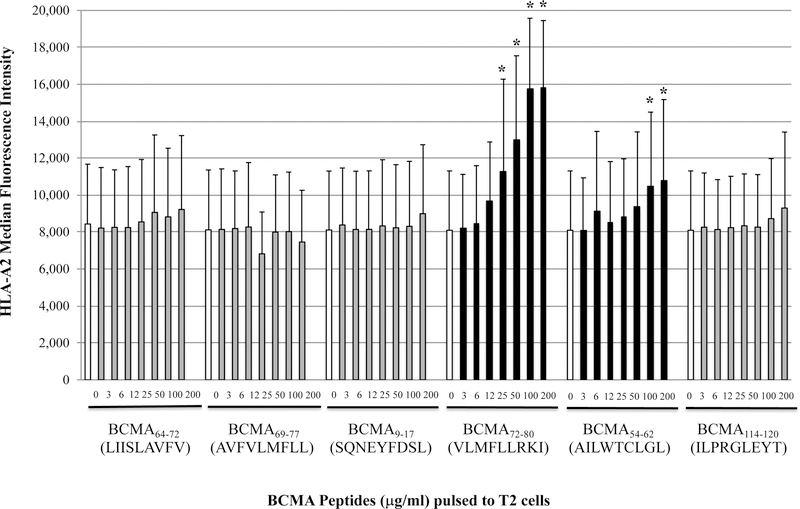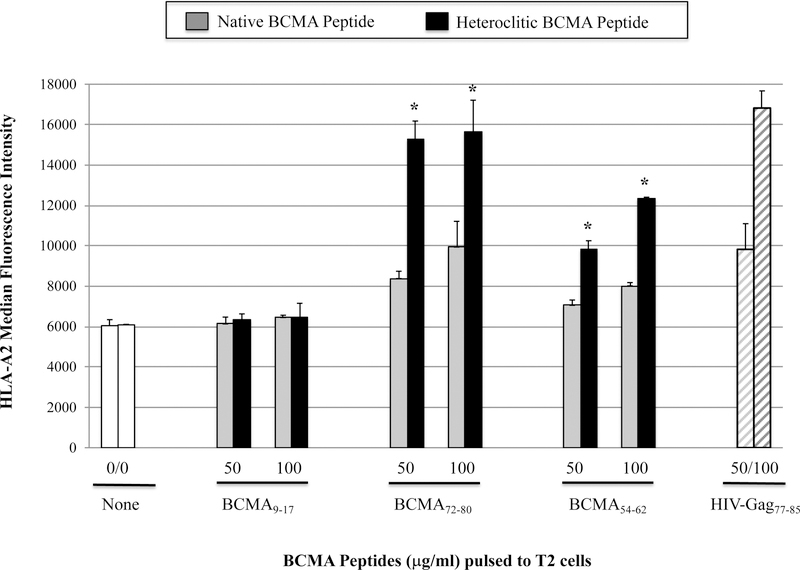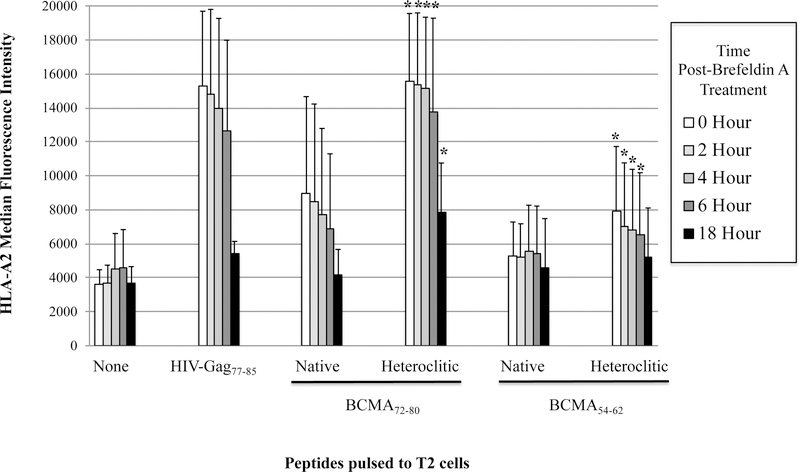Figure 1. Characterization of native or heteroclitic BCMA peptide for their HLA-A2 binding affinity and stability.
T2 cells were pulsed overnight with native or heteroclitic BCMA peptide in serum-fee AIM-V media and stained with HLA-A2-PE mAb for flow cytometry analyses. HLA-A2-specificity of the peptide is shown as an increase in HLA-A2 mean fluorescence intensity (MFI) on T2 cells. HLA-A2 specific HIV-Gag77–85 peptide was used as the positive control. Fig. 1A. Native BCMA peptides (3 – 200 µg/ml) binding affinity to HLA-A2. Fig. 1B. Native and heteroclitic BCMA9–17, BCMA72–80 and BCMA54–62 peptides (50 – 100 µg/ml) binding affinity to HLA-A2. Fig. 1C. Native and heteroclitic BCMA72–80 and BCMA54–62 peptides (50 µg/ml) binding affinity and stability to HLA-A2, post-Brefeldin A treatment (0 – 18 hours). Results represent the mean ± SE of three separate experiments.



